At a Glance
Pros
- Best-in-class performance
- Beautiful design & finish
- Impressive battery life
- Capable cameras
Cons
- Smaller notch doesn’t add much
- No telephoto camera
- 60Hz display is dated
- Slow charging
Our Verdict
A 60Hz display is the only thing really stopping the iPhone 13 from being the most competitive phone on the market. It improves on its predecessor and otherwise outperforms rivals deftly.
In 2020, across four iPhone models, most people’s decision making came between the iPhone 12 and 12 Pro. With this year’s seemingly incremental improvements, do overdue iPhone upgraders face the same conundrum or is the standard iPhone 13 the smartest pick of the bunch?
On the surface, little appears to have changed compared to last year’s iPhone – there’s a new palette of colours to choose between (including the new ‘green’ which is available from 18 March 2022), the rear cameras are now positioned at a diagonal and there’s a fresh piece of silicon running the show – but beyond that, the 13 almost looks almost like a carbon copy of its predecessor.
As ever with the iPhone formula, reviewing this year’s model is an exercise in understanding whether Apple has managed to pack its new standard model with enough new features to feel like a worthwhile upgrade, while also striking a price/performance balance that truly competes against the wider smartphone market.
Design and build
- Beautiful design
- Great colour options (including new green)
- Top-notch water resistance
Last year, long-time iPhone fans had their sense of nostalgia tickled, when Apple moved from the 11 series’ rounded geometry to a more slab-sided look, as first seen on 2010’s iPhone 4, albeit with all the precision you’d expect from a subsequent decade of practice refining the iPhone’s form.
 iPhone 13 (left), iPhone 12 (right)
iPhone 13 (left), iPhone 12 (right)
Visually, the changes from last year’s to this year’s vanilla iPhone are far less dramatic and, as odd as it may sound, this aesthetic standstill is actually appreciated. Although the iPhone 11‘s design language wasn’t crying out for an overhaul and was arguably more comfortable in the hand, the strong lines and straight sides employed by the iPhone 12 and 13 help the iPhone stand out against the many round-edged rivals on the Android side of the fence; not to mention there’s the practical benefit of great grip – even if it is at the expense of some elegance.
The Pro line goes for flashier material finishes – like its mirror-polished stainless steel frame – while the standard 13 and 13 Mini are offered up in a wider assortment of colours. White, black, green and red entries have appeared across the last two generations of the iPhone, but last year Apple also introduced a dark blue finish, which has been warmed up for this year’s collection.

Then there’s the 13 line’s signature colour (pictured) – a new pale pastel pink that (after a quick search online) most closely resembles what Pantone describes as ‘Sheer Pink’. Set against a darker pink aluminium frame, there’s a surprisingly understated elegance to this finish that not all colourways benefit from. In my opinion, it might just be the colour of choice across the entirety of this year’s iPhone 13/13 Pro line-up.
The official Silicone Case with MagSafe in Pink Pomelo – which Apple supplied with our review sample – also serves up a pleasingly punchy contrast; if you sometimes want to rock the finish with a little more flair while also protecting that hard-edged frame from the nicks and scrapes that it’ll otherwise undoubtedly pick up in day-to-day use.
At 174g, the 13 is a tad heavier than its predecessor but it’s still well below the 200g threshold where the weight of most phones starts to become noticeable. That new camera module adds a touch more thickness too – worth being aware of for those irritated by the characteristic wobble that placing a phone with a protruding camera like this on a flat surface can result in.

The signature physical alert slider is always a welcome inclusion, positioned alongside tactile volume and sleep/wake/Siri/Apple Pay keys on either side. Apple still refuses to move away from Lighting to USB-C ( and it’s unlikely to ever do so), but while your Mac and your iPad might use a more universally accepted port nowadays, holding onto Lightning means those with an existing accessory ecosystem won’t have it immediately rendered useless by the 13.
For the accident-prone, there’s also the phone’s water resistance to consider, which far surpasses the industry-standard interpretation of IP68-certification; having been tested to withstand being submerged in up to six metres of fresh water for up to 30 minutes (for comparison, the Samsung Galaxy S21 Ultra is only IP68-certified in up to 1.5 metres and most other rivals are only tested in 1m of water).
Display and audio
- Superb colours and contrast
- 60Hz lags behind the competition
- Smaller notch doesn’t really add anything
At first blush, the 13 sports what looks like the same great 6.1in 19.5:9 Super Retina XDR AMOLED panel used on the iPhone 12. It’s just as crisp, beautifully vibrant and doles out superb viewing angles, as well as improved brightness of up to 800 nits in bright sunlight (the 12 topped out at 625 nits under the same conditions) and up to 1200 nits when viewing HDR content – according to Apple.
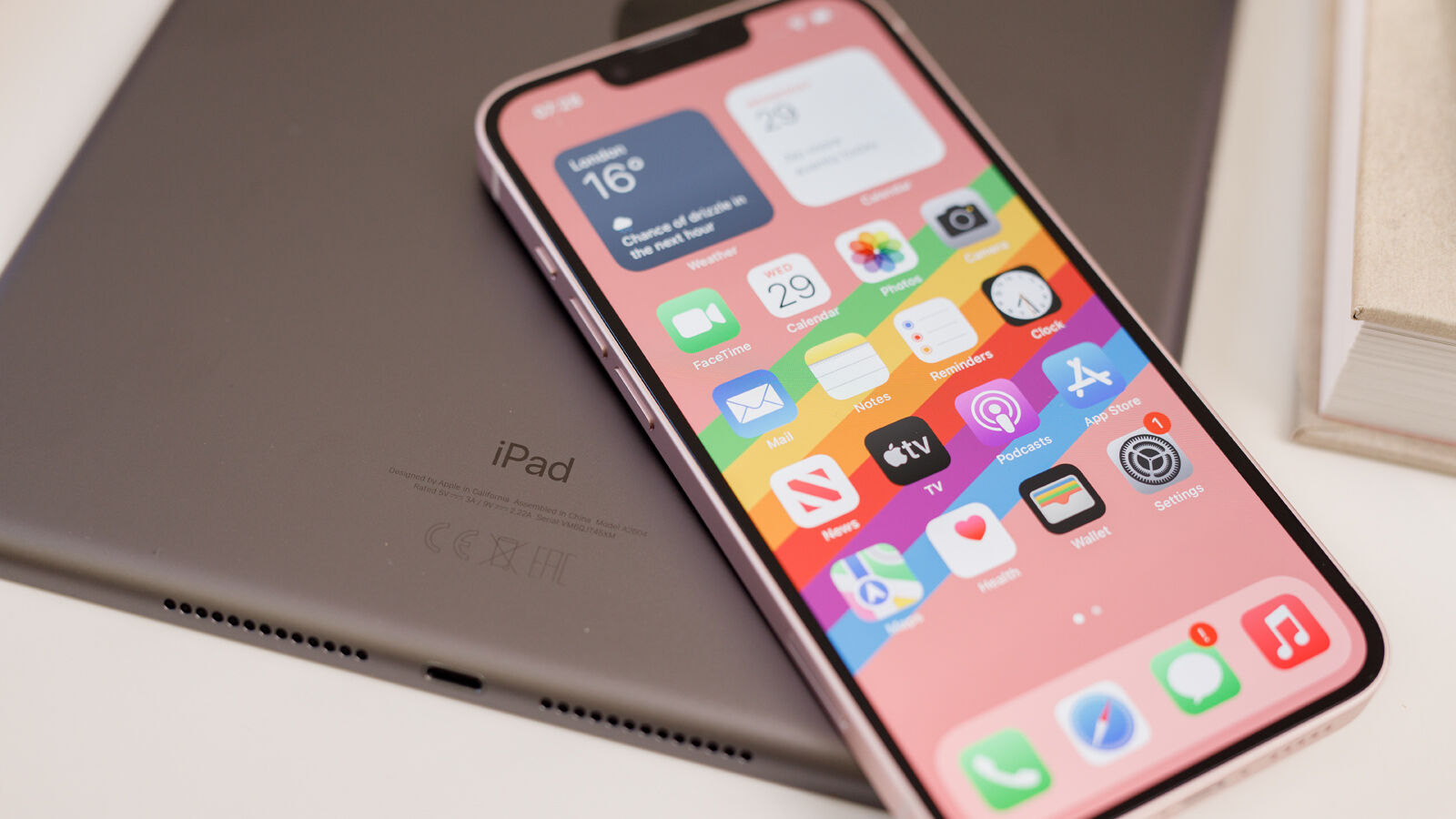
Side by side, keen-eyed iPhone users might also notice a key physical difference, in the notch. While Apple still hasn’t managed to eliminate it completely, it has shrunk the area it occupies down by about 20%. As before, it plays host to the front camera and TrueDepth system (used for Face ID and Memoji), but the earpiece has been shifted upwards, towards the edge of the frame, without impacting audio quality.
While a smaller notch may seem like progress, iOS doesn’t appear to capitalise on the extra pixels freed up on either side, with the same icons and indicators present as always. If anything, this is perhaps the one upgrade this year that feels like a box-ticking exercise to imply progress more than anything else. We’re all still holding out hope for the iPhone 14‘s rumoured notch-less display, as a result.
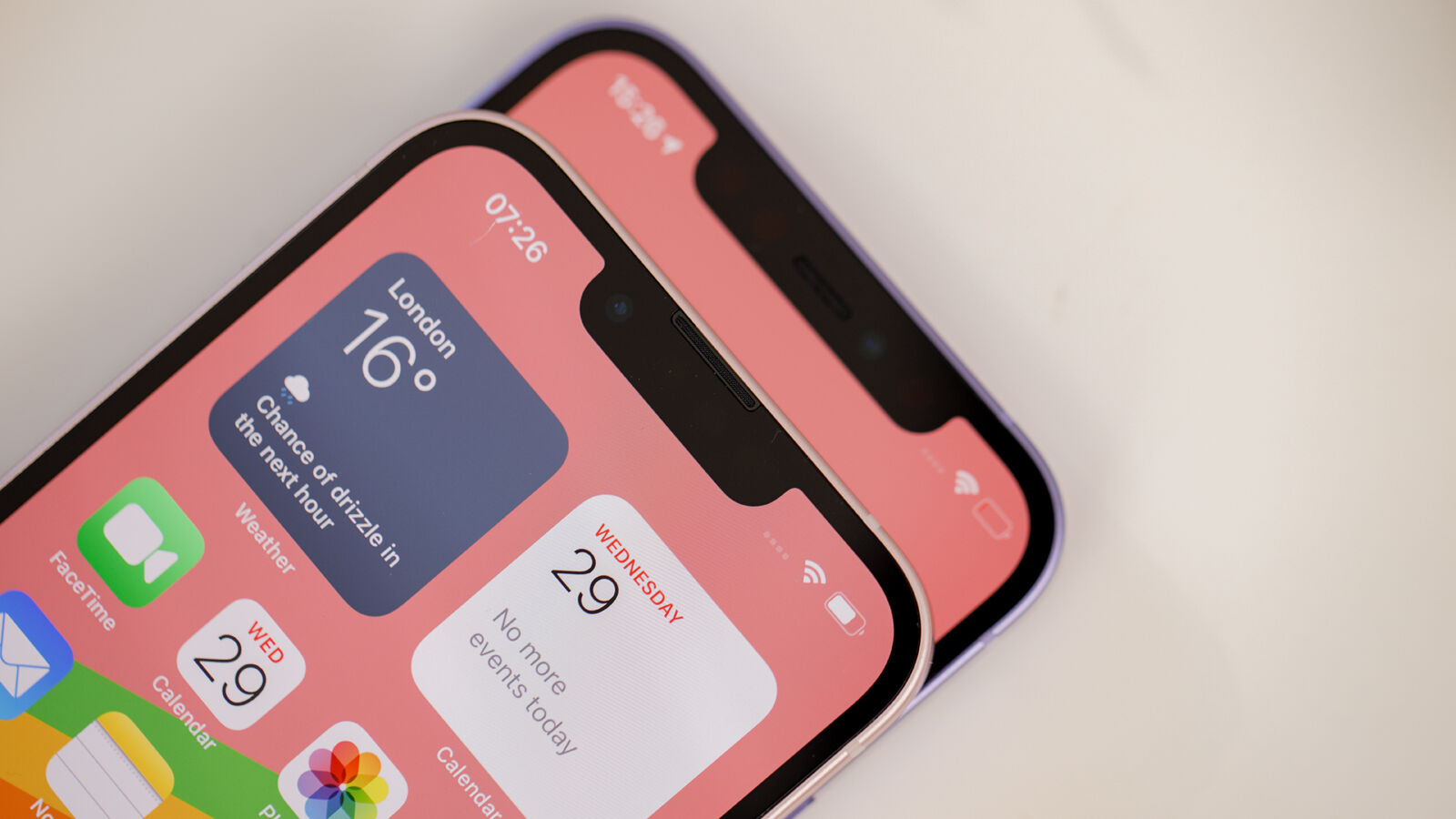 iPhone 13 (front), iPhone 12 (rear)
iPhone 13 (front), iPhone 12 (rear)
One of the other big talking points for this year’s crop of iPhones is the adoption of ProMotion – Apple’s brand name for the high refresh rate display tech that’s already found on its iPad Pros, serving up super-smooth visuals that add to a device’s sense of responsiveness and fluidity.
Despite finding its way onto both Pro models, as the name suggests, ProMotion remains out of the vanilla iPhone 13’s reach. While it fits Apple’s marketing framework – helping better differentiate the Pro from its standard sibling – it’s arguably the most disappointing omission from the 13’s otherwise excellent screen and renders it hugely behind the curve as a result; with most rival phone makers offering high refresh rate displays across not only their flagship devices but their mid-rangers too.
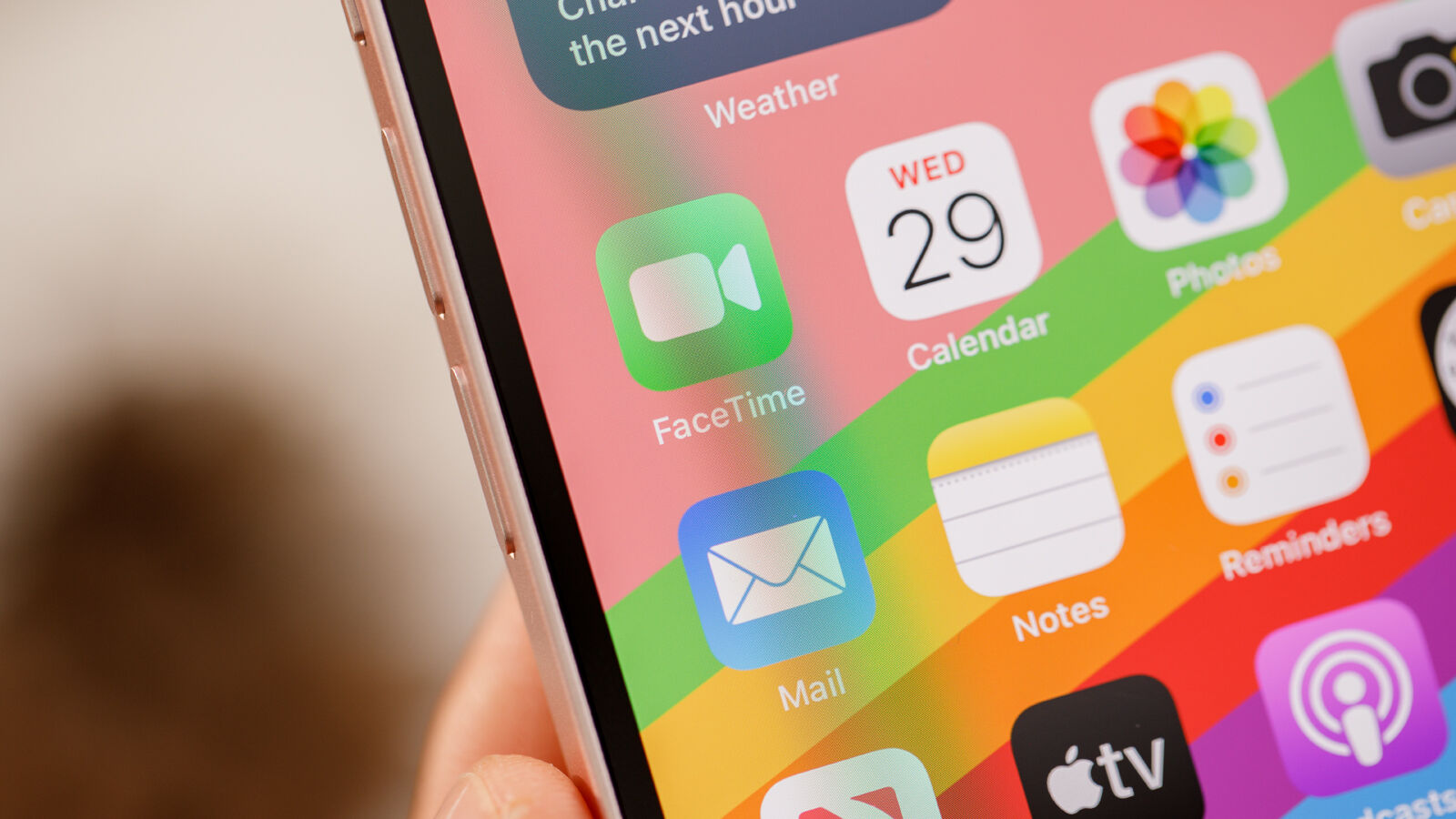
Luckily, iOS has long handled motion with more aplomb than Android, meaning – even at 60Hz – content has always been rendered more deftly on iPhone anyway. However, a bump to 90Hz for this year’s standard and Mini iPhones would have been nice, Apple.
Like the back glass and as on last year’s model, Apple’s Ceramic Shield protects the display too and independent reports suggest that it’s no less (or more) resilient this time around, compared to that of the 12 Series.
The stereo speakers deliver a well-balanced sound, not quite as crisp as the likes of Google’s Pixel 5 but offering up richer mids as a result. With only a Lightning port to hand, you’ll have to buy compatible earphones or a 3.5mm adapter if you want wired audio, while Bluetooth 5.0 and understandably tight AirPods integration will make wireless listening the preferred choice for most, helped by the likes of spatial audio and voice isolation during calls onboard as well.
Software and features
- iOS as approachable and easy to use as ever
- iOS 15 adds meaningful features like Focus Modes
- FaceTime finally supports Android and Windows users
If you’re on any iPhone from the 6S range or newer, you may well have already upgraded to iOS 15 but the 13 series are the first set of iPhones to launch running this latest incarnation of Apple’s mobile operating system.
While our dedicated iOS 15 feature offers a deep-dive on all of the new functionality it brings to the table, highlights include improved FaceTime calling, with the ability to now directly connect with Android and Windows users, reworked content presentation in Messages, richer Apple Maps and more.

Notification Summary is a particular highlight, as it lets you group non-essential notifications (you can decide what is and isn’t important) into a summary that pops up at chosen intervals (up to eight times) throughout the day, reducing the number of times trivial tweets or Instagram posts might otherwise distract you.
Speaking of distractions, Do Not Disturb has been expanded upon, with Focus Modes: dedicated profiles that you can tailor to block notifications from certain apps, hide chosen home screens filled with select apps and schedule to turn on and off automatically. It better helps compartmentalise how your iPhone functions for you throughout the day, with default Focus Modes titled Personal, Work and Sleep.
You can also whitelist which contacts are allowed to break through your Focus Modes’ Do Not Disturb behaviour and the feature can even automatically notify non-whitelisted contacts trying to get ahold of you that you’re unavailable, via iMessage.
While perhaps not the sexiest upgrades in iOS history, these are still considered and meaningful improvements that help rein in some of the less savoury aspects of smartphone ownership (mainly notification overload and distractions) and are abilities that Android should (and likely will) crib from.
The underlying iOS experience should feel immediately familiar to those already using an iPhone, while those either making the move from Android or new to smartphones altogether shouldn’t find the learning curve too intimidating, with Apple’s often overlooked Tips app serving as a great resource to familiarise yourself with the operating system’s quirks, sensibilities and standout features.
NFC enables Apple Pay contactless payments (which are widely accepted nowadays), the company’s iconic Siri voice assistant (which works hands-free via the “Hey Siri” wake command) is present, and relatively new additions to iOS, like widgets, make your home screens more useful at a glance too.
Performance
- Outperforms even the most powerful Android flagships
- A15 Bionic should deliver great performance long-term
- Great for gaming and other demanding apps
While comparing benchmarking scores against Android rivals is an imperfect way to evaluate the relative power of Apple’s latest iPhones, it does align with the expected top-notch performance that the company’s handsets have come to be known for.
The entirety of the iPhone 13 family showcases Apple’s refined 5nm A15 Bionic chip, with the key differentiation being their GPUs: packing four cores on the 13 and 13 Mini, but five on the 13 Pro and 13 Pro Max.
This small divergence likely won’t have any tangible effect in day-to-day use and will only come into play for those considering an iPhone in order to get some serious mobile gaming or video rendering done; in which case, the beefier version of the A15 and ProMotion support on the Pro/Pro Max make the decision for you.
Those looking to develop 3D or AR experiences powered by iPhone would likely be better served by the additional graphical power of the Pros too but these edge cases should highlight just how capable the standard model is.
In terms of performance, the iPhone 13 proves to be one of the most formidable smartphones on the market, deftly outpacing last year’s top-tier iPhone 12 Pro Max and a handful of this year’s most capable (and pricier) Android flagships too.
On-screen graphical benchmarks plateau at 60fps due to the limitation of the 60Hz refresh rate display but it’s clear the A15 has a substantial amount of headroom which should prove worthwhile for heavy users, gamers or simply those who hold onto the same iPhone for more than a couple of years between upgrades.
Battery and charging
- Charging speeds are still relatively slow
- Superb battery longevity
- No charger in box
Excluding the Pro Max lineage, the iPhone 13 features the largest battery of any other iPhone to date (even larger than the iPhone 13 Pro’s) and Apple touts improved longevity as one of the phone’s biggest enhancements over last year’s model.
Officially speaking, the 13 has been designed to last 2.5 hours longer than the 12 and that’s exactly what the results of our battery benchmark reflected. Despite Apple promising “all-day battery life”, in practice, the iPhone 13 could probably see users through two days of use without trouble, also standing it in good stead in the long-term, with regards to battery degradation.
In real-world use, the phone also managed an outstanding 8.5 hours of screen-on time on a single charge, beating out the likes of direct rival, Samsung’s Galaxy S21, by a couple of hours. It even surpassed last year’s larger-batteried 12 Pro Max (which averaged around 7.5 hours of screen-on time).
As well as a bigger battery and a more efficient chipset, Apple’s also added a Smart Data mode that switches from 5G to 4G LTE, when performing tasks that don’t need the absolute quickest cellular speeds available, using less energy as a result.
As for charging, the 13 isn’t quite so close to the front of the pack. The 13 series represents the second generation of iPhones to omit a power adapter from the box, with only a USB-C to Lightning cable now included.
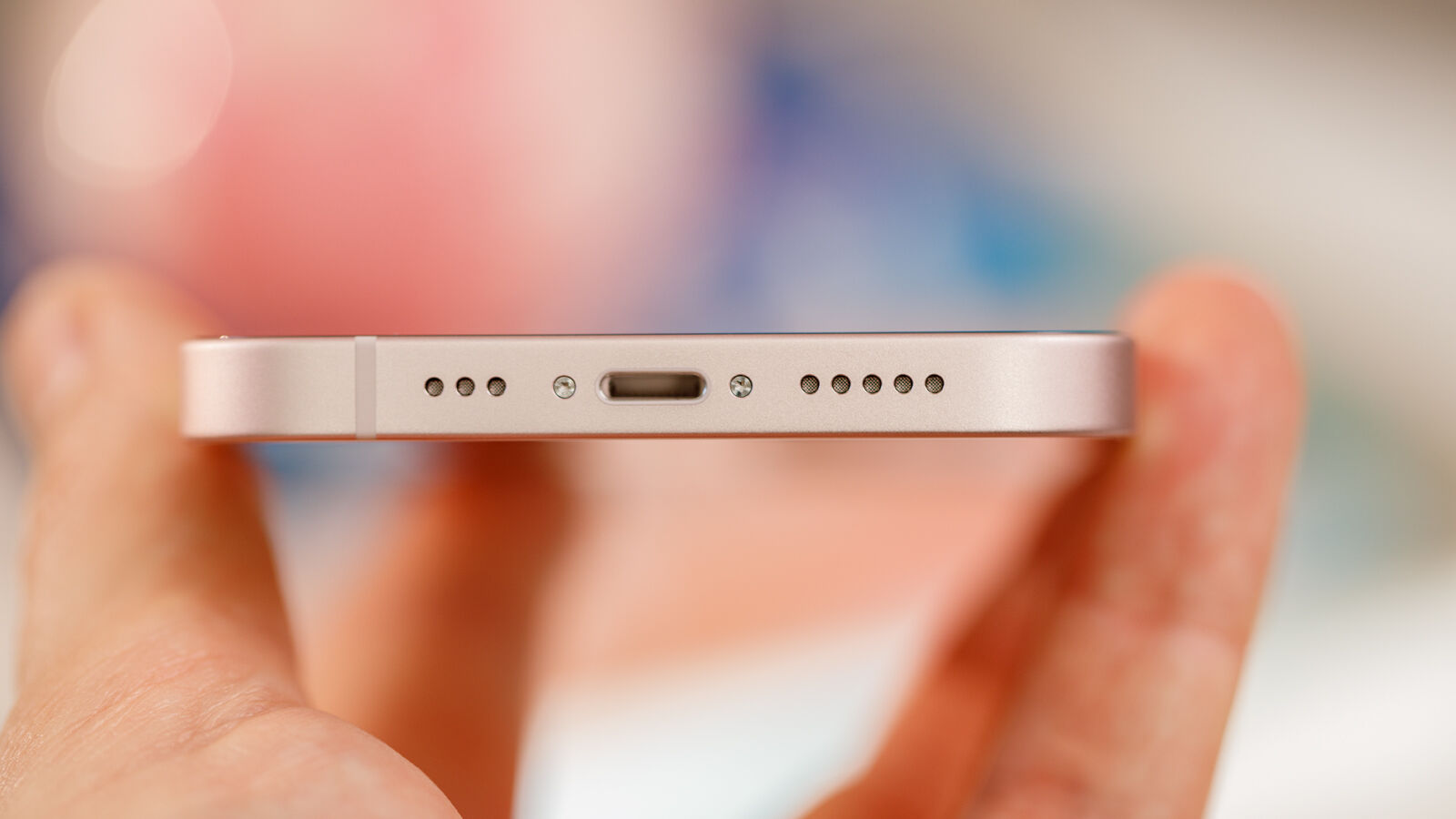
While charging speeds have improved on iPhones in recent years, they still lag behind the competition, especially when it comes to phone makers like Xiaomi, whose most recent release – the Xiaomi 11T Pro – undercuts even the 13 Mini on price but boasts blisteringly fast 120W charging that refills the phone’s huge 5000mAh battery to full in just 20 minutes flat.
In the case of the iPhone 13, Apple states that wired charging tops out at 20W and testing with a 27W (Motorola-made) PD charger, the 13 hit Apple’s promised 50% charge in 30 minutes but still took 1.75 hours to fully replenish (although it hd reached 80% charge after one hour – more than enough for a day’s worth of use).
MagSafe once again features, facilitating 15W charging from compatible chargers, alongside support for a growing ecosystem of cases and magnetically attached accessories. You can also charge the iPhone 13 wirelessly using any standard Qi charger but, as with last year’s iPhones, speeds are then capped at 7.5W.
Camera
- Superb selfies
- No telephoto camera
- Cinematic Mode is hit-and-miss at capture
- Outstanding dynamic range but Smart HDR can trip up
At first glance, it seemed that the unusual diagonal sensor placement of the 13 (and 13 Mini’s) dual rear camera system was simply an exercise in differentiation with its otherwise identical-looking predecessor. However, a slate of new photographic hardware is apparently the real reason for the phone’s offset snappers.
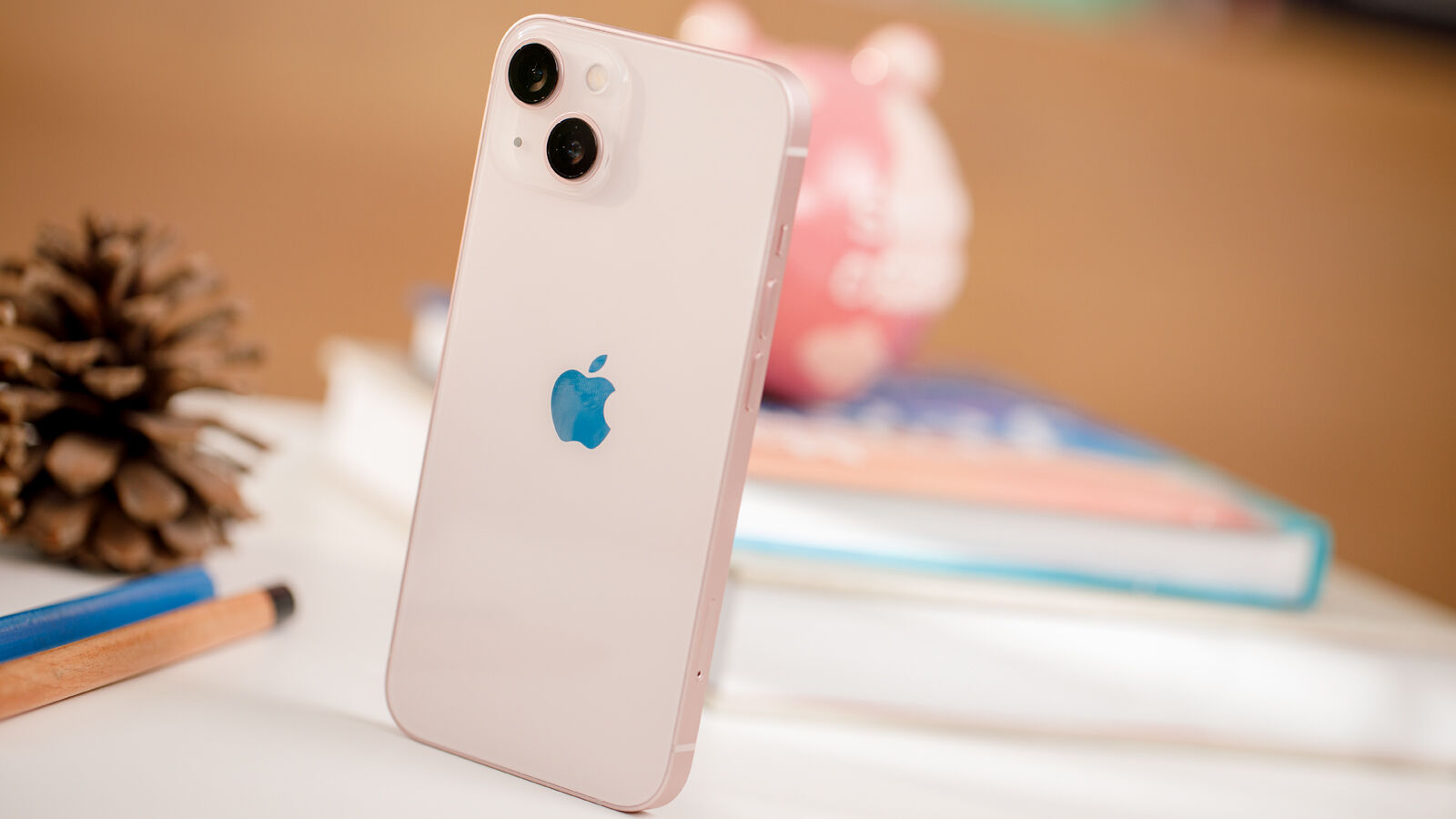
As with last year, you’re still getting a pair of 12Mp sensors on the back: a main snapper with an fI1.6 aperture and an f/2.4 ultrawide with a 120˚ field of view, accompanied by an updated ISP and improved Deep Fusion and Smart HDR 4 processing.
The primary wide-angle has received the biggest improvements, with sensor-shift optical image stabilisation – previously exclusive to 2020’s Pro Max – paired with larger 1.7µm pixels (up from 1.4µm on the 12) that allow in more light (47% more, according to Apple), in less time; resulting in brighter, sharper low light images.
Two other new additions come in the form of Cinematic Mode, which executes automated focus pulls between subjects when shooting video (you can even refocus footage you’ve already shot) and Photographic Styles, which, unlike filters, tweak the colour science and contrast applied to your shots, while intelligently preserving traits like skin colour accuracy, not dissimilar to the Leica-branded Film Modes Huawei first introduced on its P9 series, back in 2016.

Using the ‘standard’ photographic style for the bulk of testing, the iPhone 13 delivers beautiful imagery, with some superb noise suppression, even in low light. Colours are rich and contrast excellent, underpinned by some of the broadest dynamic range I’ve seen on a smartphone camera. The caveat is that, while Apple’s algorithm clearly works hard to preserve as much image detail as possible, sometimes it trips up and simply blows out bright elements, like skies – something that other sources have reported too.
That broad dynamic range carries across to low light shooting, made more apparent when switching between the main and ultrawide sensor, which by comparison delivers shots with harsher contrast. Extreme low light shooting can also pull images out of impressively dark scenarios, even if it doesn’t manage this quite as deftly as the likes of uber-flagships like the Galaxy S21 Ultra.
Fine detail is best preserved when shooting macro and portrait shots with the main lens, but Apple’s processing never oversteps its bounds, clearly geared towards more natural and arguably warmer shots overall, when compared to the default camera settings on most comparable rivals – like Google’s Pixel 5.
Video quality (which tops out at 4K/60fps with Dolby Vision HDR) carries the same incredible dynamic range and colour reproduction that stills offer. Handheld footage also offers competent stabilisation across all three lenses (i.e. front and back), and Cinematic Mode is a fun new addition too.
 Manually fixing a mistimed Cinematic Mode automated focus pull after the fact
Manually fixing a mistimed Cinematic Mode automated focus pull after the fact
Like Apple’s HDR tech, however, it too can be tripped up in recording – having tested it across the front and rear cameras. While the new mode can detect subjects and track them as desired, the automated system sometimes second-guesses itself and reverts back to focus on the foreground subject, even if their face is still turned away. This is likely a fixable problem on Apple’s side, but until they issue an update, the ability to refocus content after capture is easily the biggest asset to this new feature.
You’re also getting one of the best selfie cameras out there right now, carrying across an astounding amount from the phone’s rear camera system; including 4K video recording, Smart HDR 4, great dynamic range, solid stabilisation and even Cinematic Mode. It presents a cropped view by default but, if desired, you can push out to a wider field of view to fit more friends in-frame.
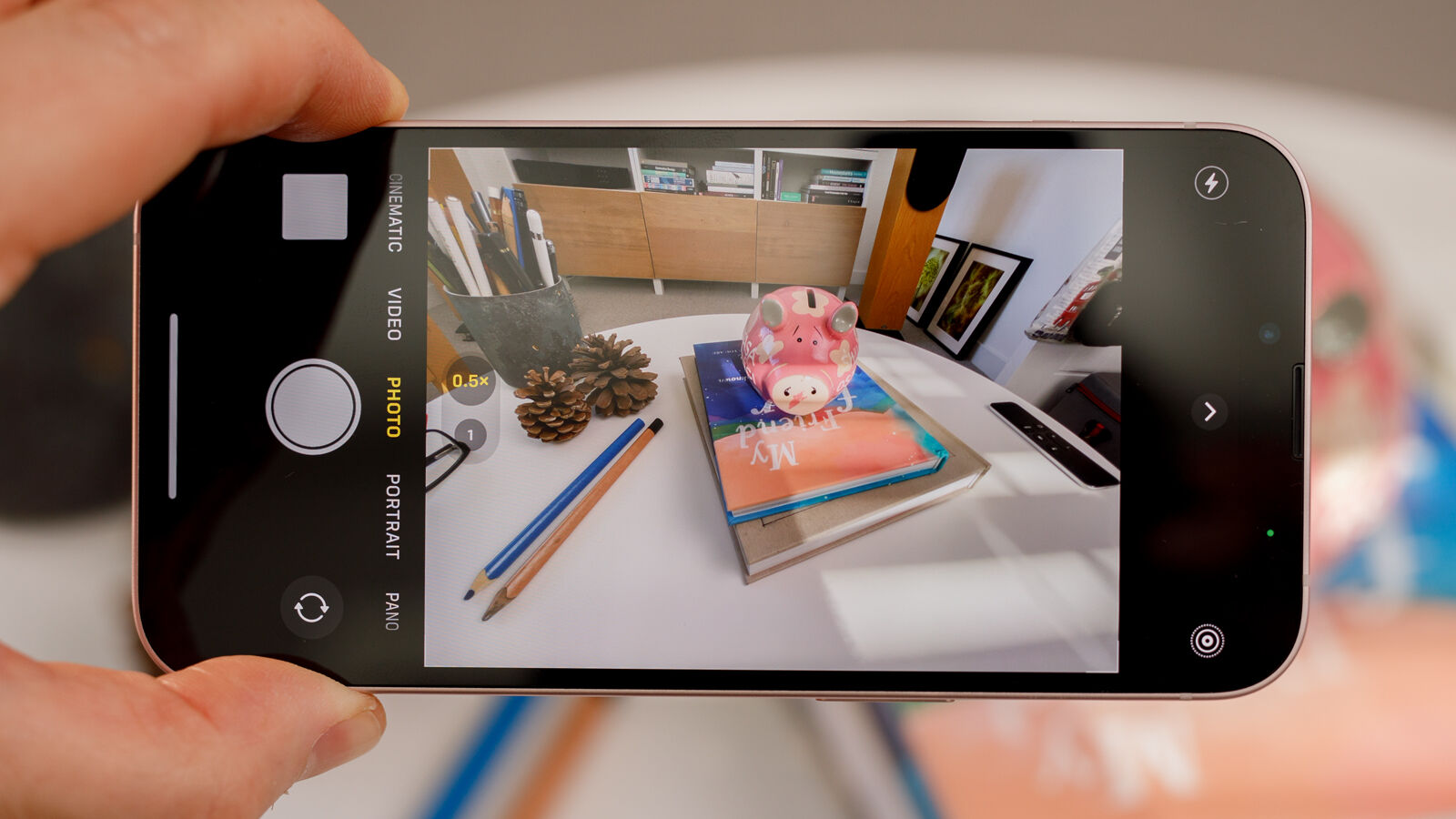 The iPhone 13’s rear dual cameras feature a zoom range of 0.5x (optical) to 5x (digital)
The iPhone 13’s rear dual cameras feature a zoom range of 0.5x (optical) to 5x (digital)
For everything the 13’s camera system does bring to the table, however, one glaring omission is the complete lack of a telephoto snapper. Base iPhones have always been left to fend with fewer sensors compared to the company’s Plus/Pro models over the years – ever since the first multi-lensed iPhone – the 7 Plus – arrived back in 2016. As such, if you want that extra photographic flexibility, you’re going to have to go Pro.
As a result, zoom quality is arguably the camera system’s biggest weakness and despite topping out at 5x magnification, there’s little that can rescue image quality (particularly fine detail) when it comes to shooting subjects farther away – as apparent in the samples above.
Price and availability
Despite the improvements the iPhone 13 brings to the table and the fact that it starts with double the base storage of the iPhone 12 (at 128GB), pricing is practically unchanged from last year, starting at £779/€899/US$799 (with UK pricing actually coming in £20 lower than last year).
While this still isn’t quite as cheap as the iPhone 11’s original asking price, it renders the 13 more competitive against full-fat flagship rivals like the Samsung Galaxy S21, Oppo Find X3 Pro and Xiaomi Mi 11 – all of which have already dropped in price since their respective launches.
You can pick it up directly from Apple’s website ( US, UK, France, Spain, Germany, India, Australia) or from retailers like Amazon ( UK, France, Spain, Germany, India) as of 24 September 2021.
Verdict
The strengths of last year’s model have only been amplified with the iPhone 13, which delivers some of the best performance on the market, bolstered by exceptional camera quality, and the improved battery life that fans have been asking for.
All of these standout upgrades, however, also accentuate its weakness, which at this point feel explicitly engineered to push people towards the pricier 13 Pro. That 60Hz refresh rate on an otherwise excellent display stops it from being one of the best around, while there’s seemingly no sign that Apple intends to improve its charging speeds or add a telephoto camera onto anything other than its Pro phones.
If you need that higher refresh rate or better zoom capabilities in your life, there are a host of Android alternatives across almost every price point that should satiate, otherwise, your only options are really this year’s pricier iPhone 13 Pro or 13 Pro Max.
Of course for some, 60Hz is plenty good enough and a pair of rear cameras still covers a range of photographic scenarios. If that sounds like it’s good enough for you, in every other regard the iPhone 13 is built to last.
Specs
Apple iPhone 13: Specs
- 6.1in 60Hz Super Retina XDR OLED display
- Apple A15 Bionic processor w/ quad-core GPU
- 128GB/256GB/512GB storage
- 12Mp main camera w/ sensor shift OIS
- 12Mp ultrawite camera w/ 120° FoV
- 12Mp TrueDepth front camera
- Face ID
- Wi-Fi 6
- 5G
- NFC
- Bluetooth 5
- 3240mAh battery
- Up to 20W PD charging
- Up to 15W MagSafe wireless charging
- MagSafe accessory support
- Up to 7.5W Qi wireless charging
- IP68 dust/water resistance (up to 6 metres for up to 30 minutes)
- Dual SIM (nano and eSim)
- 146.7mm x 71.5mm x 7.7mm 174 grams
- Colours: Starlight, Midnight, blue, red, pink










